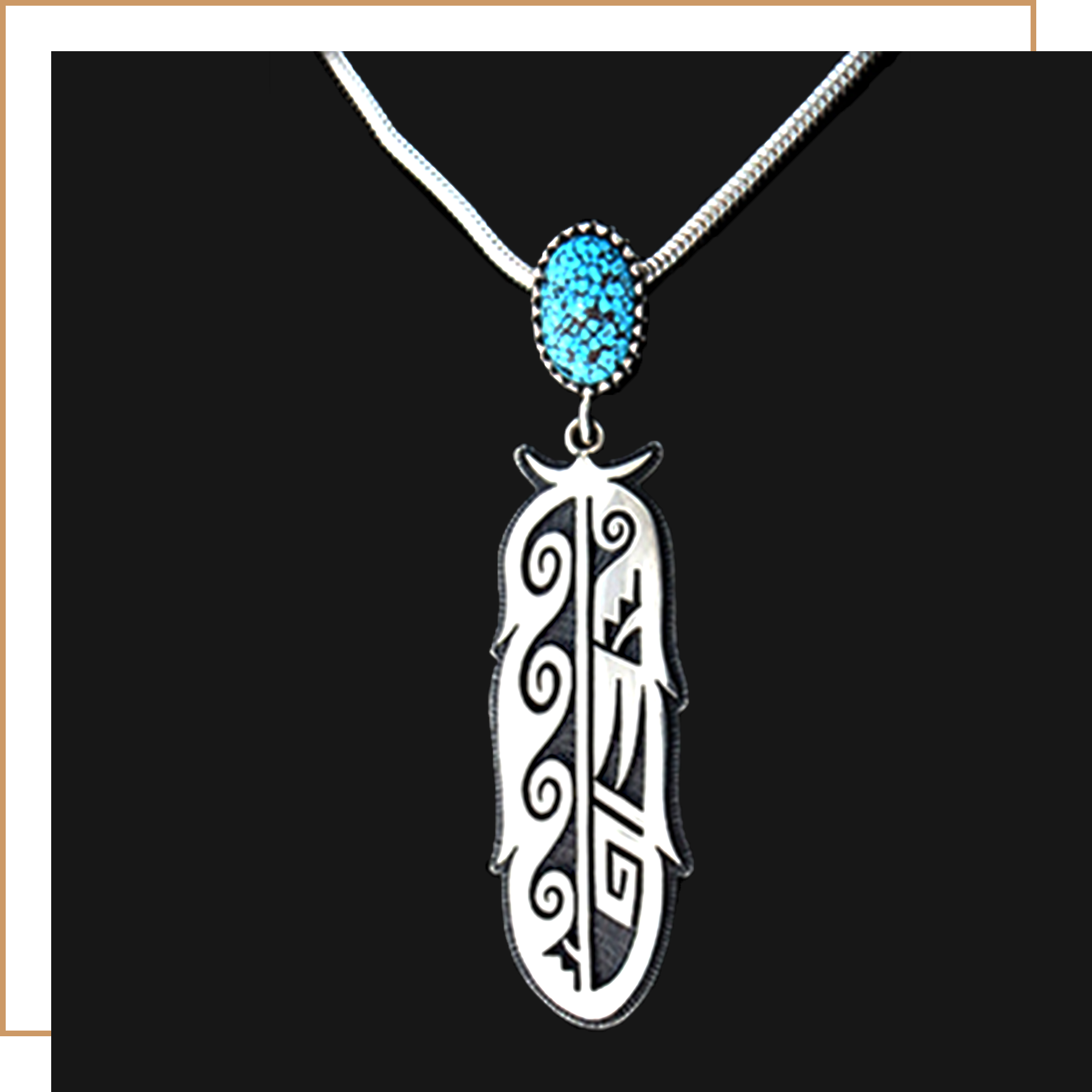Hopi Jewelry
The Hopi, as did other peoples of the Southwest, learned metal working from the Spanish.
Until post World War II, Hopi silver work was primarily cast or stamped. During the 1940's the Hopi developed a unique style called overlay (this term comes from the method by which the jewelry is constructed).
Hopi overlay is constructed from two layers of sterling silver. A design is traced on a sheet of silver and is then painstakingly cut out with a jeweler's saw by hand. This top design layer is then silver soldered to another sheet, the bottom layer, of silver. Texturing is added to the bottom layer in all the open areas of the design using a hammer and a small punch. The piece is then trimmed to it's final shape and size. Next the assembled item is hammered into its final form, contoured, and blackened to enhance the negative areas of the design. The top surface is then buffed to either a matte-like satin finish or to a mirror-like high polish.

In choosing a piece of Hopi silver overlay jewelry, it is important that you are drawn to the piece by its style, design, and balance. Inspect the piece to establish the quality of the workmanship, look for precise cutting of the design elements and for uniform punch marks in the recessed matted areas of the design.
Always look at the reverse side of each piece for the hallmark of the silversmith. Every Hopi silversmith has a unique hallmark and uses it as his or her signature. Please be aware that Sterling silver will tarnish. The more it is worn, the less quickly this will occur, however, when you need to polish the piece, use a silver polishing cloth rather than a liquid or paste silver cleaner to avoid removing the black from the recessed areas of the design. Most of all, enjoy the pieces you have!
